If you happen to go searching about in CHM’s online catalog of its collections—and you really should—you very well might find the image above. You might pause and read the catalog description. You then might have some questions. Why would someone write “Pat’s Glory 6-20-68” on a 4-inch diameter quartz crucible? What is a crucible for silicon crystal growing anyway? How did this object become part of the Museum’s collection?
Since I just made up those questions for you, I’ll take the additional liberty of answering the last first. How did “Pat’s Glory” find its way into the Museum’s collection? The answer is that curation is largely a story of dependence. Curators depend on the people who made revealing objects and other materials. They depend on people who have kept them safe, and others who have made them available for preservation and display. Curators depend on their colleagues for access to and safeguarding of the collections. They depend on people for most of the knowledge required to understand the materials and the stories that they contain or represent.
In the case of “Pat’s Glory,” its presence in the Museum’s collections ultimately depends on one person: Patricia Anderson. In February 2020, Anderson wrote to the Museum, offering to donate a set of objects and documents she had kept safe for 50 years. They were from her work as a young woman in Silicon Valley, where she worked as a “crystal puller”—an operator of manufacturing equipment for making the key materials for semiconductor electronics—at a materials manufacturer called Elmat (later Semimetals) and then at the storied Hewlett Packard. For me, as a curator, the materials that she offered were certainly interesting but if truth be told I was far, far more interested in Anderson herself. Why?
Gender, Labor, and Silicon Valley
Silicon Valley has a very important gender and labor history. From the 1950s on, huge numbers of women have performed essential roles in the development of the technology sector in the region. In the 1950s, women predominated in the manufacturing workforce for vacuum tube and transistor production, as well as in secretarial and many clerical roles. This was true as well through the 1960s and 1970s, when manufacturing shifted to integrated circuits, although the assembly jobs in manufacturing were increasingly automated and also shifted abroad. While women have always made outstanding contributions in research, education, leadership, finance, and entrepreneurship in the Valley—although always in numbers curtailed by tremendous sexism, not talent—the large numbers of women employed in manufacturing roles vanished in the subsequent decades. Today, one finds women disproportionally represented in service roles in the technology industry (as elsewhere) —feeding, cleaning up after, and otherwise caring for others in the technology workforce—but often employed as contractual workers, with few perks and little recognition. The historian Patrick McCray has very recently drawn attention to this gender and labor history in an essay review in the Los Angeles Review of Books.
For historians and others interested in the stories of Silicon Valley’s manufacturing women, a barrier to preserving and learning from the experiences of these women is finding them. At the remove of decades, without access to employment records for hourly employees, and with frequent name changes, it can be a challenge to make contact with these women. So, when Patricia Anderson wrote to us about her collection, we jumped at the opportunity to also conduct an oral history interview with her. Below, I offer some of what can be found in this interview, illustrated by the materials that Anderson donated: A snapshot of a crystal puller’s story.
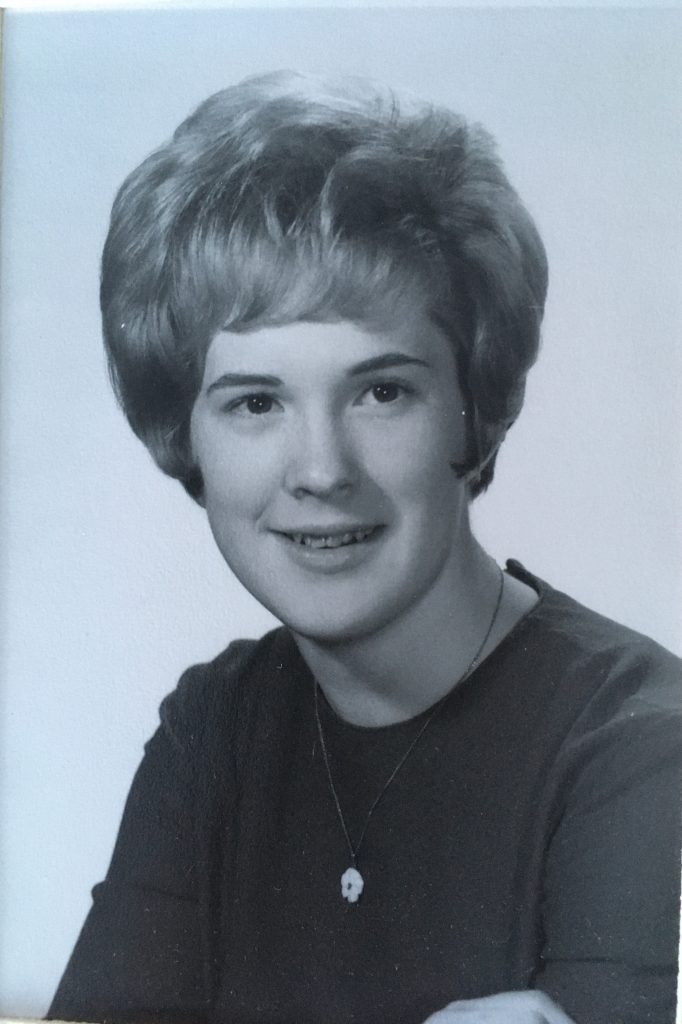
Patricia Anderson’s high school graduation photograph. She graduated in May 1965 in Petersburg, Alaska. Credit: Collection of CHM, 102792159
From Alaska to California to Fortran
From the age of five, Anderson grew up in Petersburg, Alaska, moving there in 1953. It was a small community: “It’s on an island called Mitkof Island in southeast Alaska, and Petersburg is known as Little Norway. They celebrate Norwegian Independence Day. 1,800 people lived on the island.” Her stepfather was “the telephone man in Petersburg. He did the central office. He put in the phones. He did the splicing on the poles. And I used to go down to the telephone office with him where he and one of my brothers—while he would fill great big, huge batteries that backed up the switches for operating the central office. And my mother was one of the switchboard operators.” Telephone circuits would come to play a big part of her later life, but her childhood was more outdoors than electronic: “. . . southeast Alaska is kind of the rainforest. So, you . . . played outside, and you were usually wet. But I don’t remember hobby-wise other than I was interested in math . . . We didn’t get TV in Petersburg until I was a senior in high school.”
For college, Anderson moved to Mountain View, California, in the heart of Silicon Valley. Her stepmother worked at Foothill College, where Anderson enrolled, and her father worked as a maintenance electrician at the Stanford Research Institute (SRI). She moved in with them, but she explains “. . . it was a cultural shock for me . . . I tried to quit [college], and my mom had to talk me out of it.” Even so, Anderson had difficulty confronting large groups of students in the college’s student center. For the entire first semester, she would brave her classrooms, but then retreat to her stepmother’s parked Corvair to study and wait for her next course to start. Anderson’s childhood interest in mathematics fit with her decision to enroll in the scientific data processing program. She started programming on the college’s IBM 1620 computer, enjoying Fortran, but convincing others to keypunch her programs onto cards. Her plan was to graduate from the program, move back up to Alaska, and find a “computer job” in Anchorage. As time progressed, she couldn’t find any. In the meantime, Anderson cleaned the house of and babysat for a doctor from the Stanford Medical Center as she completed her studies which had shifted over to the newly created De Anza College.
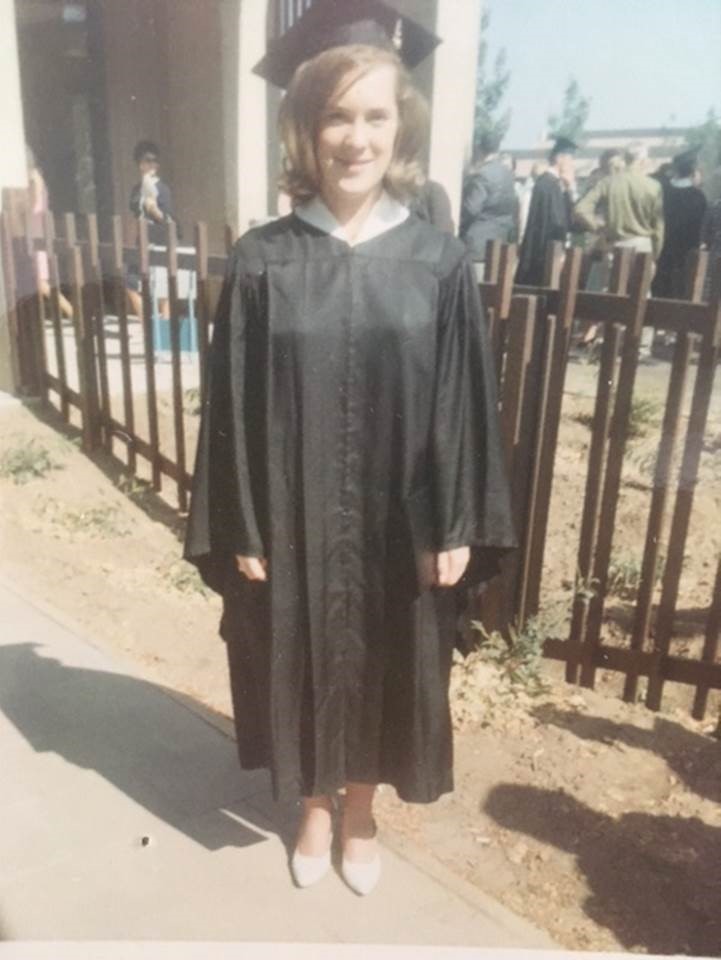
Patricia Anderson graduated from De Anza College in Cupertino on June 8, 1968, with an associate’s degree in scientific data processing. She was working as a “crystal puller” for Elmat/Semimetals at the time. Credit: Collection of CHM, 102792160
Life of a Crystal Puller
In March 1968, Anderson learned from a campus recruiter about an opening at a local manufacturer, Elmat. The job was as a crystal puller, operating machines that created silicon crystals. To make integrated circuits—computer chips—one begins with silicon wafers. These are slices of silicon crystals. Elmat made these crystals using a machine called a crystal grower. Inside, a small crucible held molten silicon at just over 2,500 degrees Fahrenheit. The grower had a mechanism just like a drill press, and the operator—often called a “crystal puller” would lower a seed crystal into the silicon melt. To create a perfect crystal, the operator would slowly draw, “pull,” the rotating seed crystal out of the melt, drawing the cooling and crystalizing silicon up and out into a single crystal ideally shaped like a small rod. The work was hourly, shift work, and Anderson decided to give it a try. While Anderson was good at it, Alaska was still on her mind. She worked at Elmat from March to her graduation in June, and then left. She was only in Alaska for a few months before “all the water froze that was in the water main that went to our house . . . I went back to California and got my job back at Elmat.”
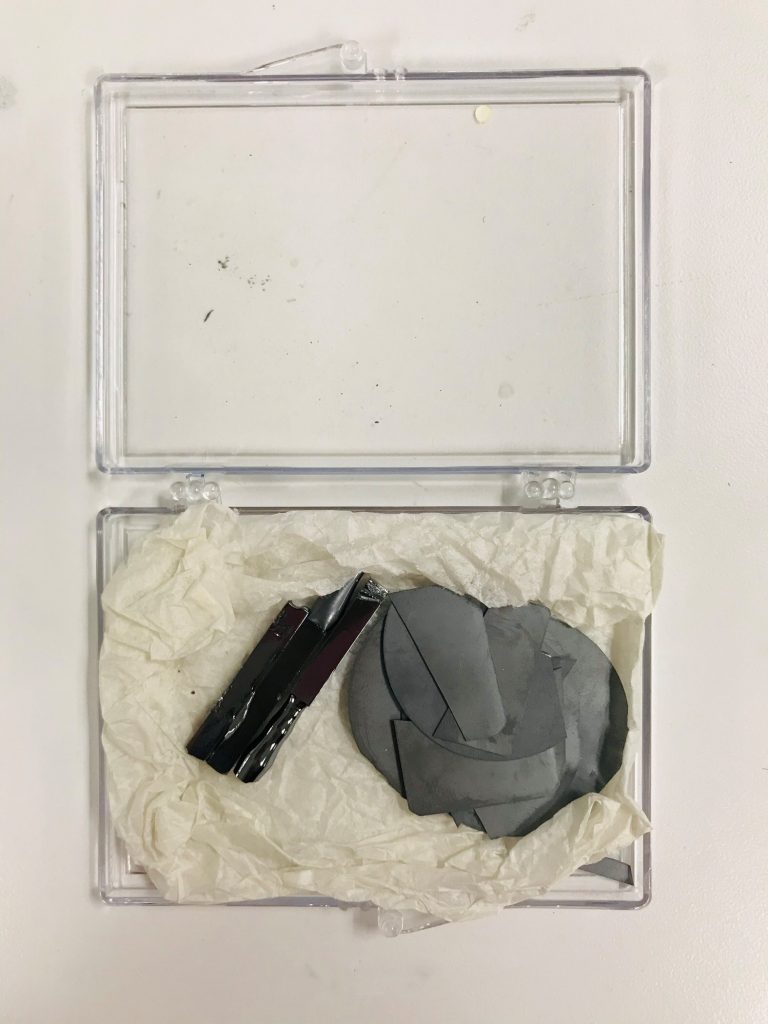
Patricia Anderson kept a set of seed crystals (left), each about an inch long, as well as several pieces of silicon crystal cut into wafers (right). Credit: Collection of CHM, 102806917
Elmat was located on National Avenue in Mountain View, close to Highway 101 and near Fairchild Semiconductor. By the time Anderson worked for Elmat, it had been acquired by the Semimetals Division of General Instruments and was just as often called Semimetals. “I remember coming in the back door, and it must have been very close to the crystal growing area because I don’t remember going down a bunch of halls or whatever. I know the wafer polishing area was down a whole different side of the building . . . I worked shift work. So, I know there was a time when I was just coming in at nighttime. I did the graveyard shift. I did a swing shift too . . . pretty much going directly into the crystal growing room. And I was trying to remember how many machines are in there. I don’t think there were that many. I’m thinking maybe eight or ten of them.”
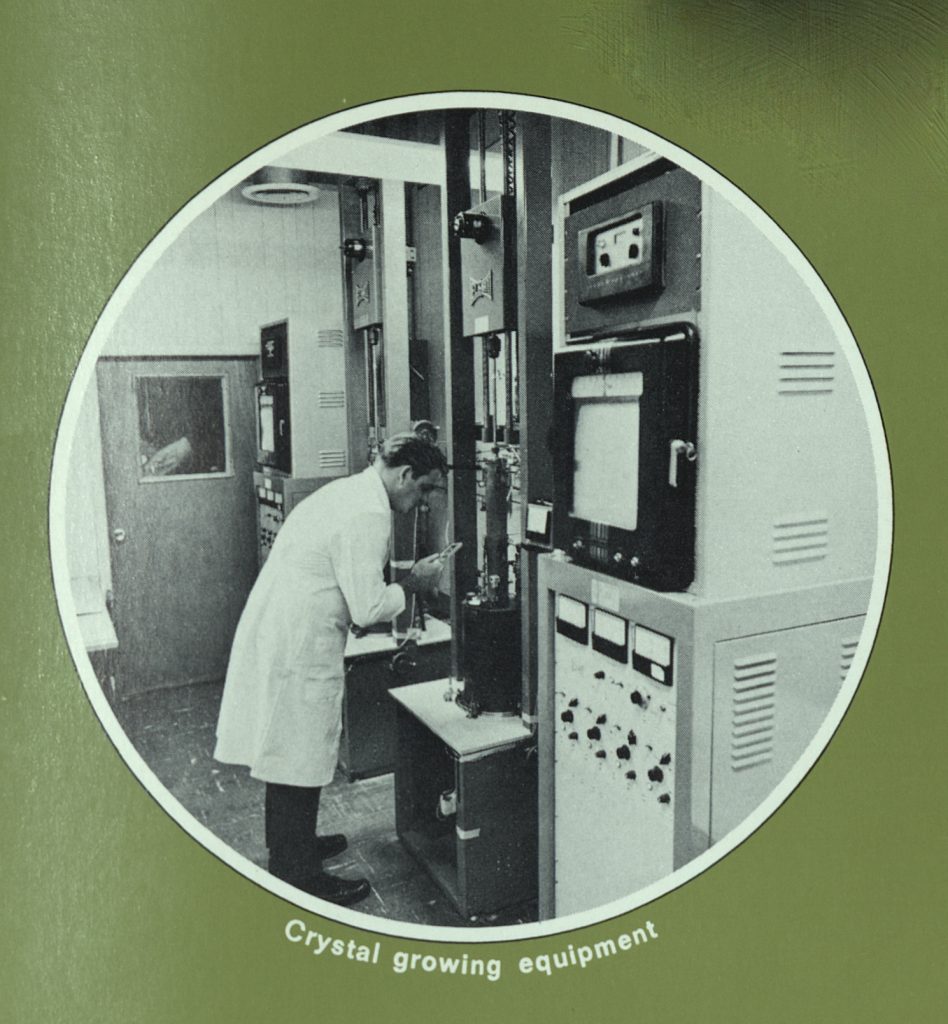
An illustration in a Semimetals Inc. brochure shows the kind of “crystal growing equipment” operated by Patricia Anderson to produce “single crystal silicon.” Credit: Collection of CHM, 102793120
Refer to the Memos
Anderson was not given a lot of formal training before she began pulling crystals. Two short memos laid out the fundamentals of crystal growing and the specific instructions for operating the equipment: “I’ve got the feeling that this is what I was handed, and I probably just watched somebody do it for a while. . . . I probably followed somebody around. I assume I just started doing it.”

The beginning of a three-page memo, likely provided to new employees of Elmat, that lays out the basics of silicon crystal and wafer production. Credit: Collection of CHM, 102793121
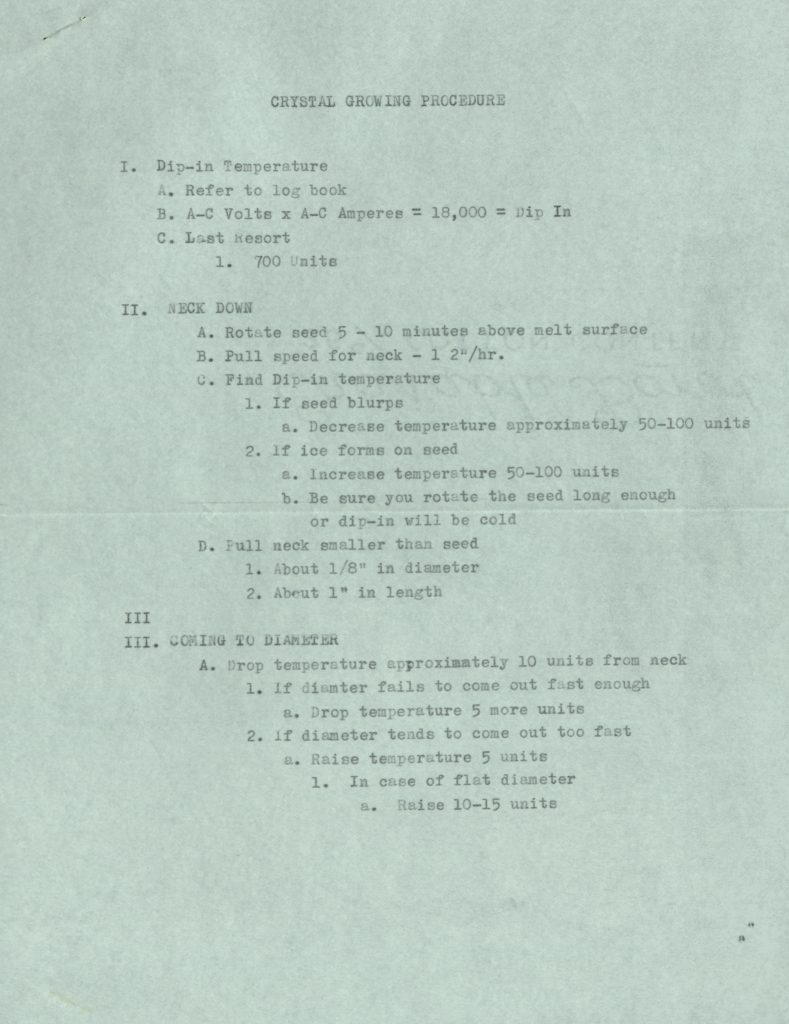
An extract from a three-page typed operator instruction for crystal growing at Elmat/Semimetals. Credit: Collection of CHM, 102793122
Pulling the crystals by controlling the crystal grower machinery was a skill that had much to do with the operator’s senses, touch, and attention. As Anderson recalls, “[W]e needed total control of what was going on. We were constantly looking in, seeing what the crystal was doing, and adjusting either the pull rate or the temperature.” Operators had to constantly peer into the very center of the blazing furnace where the crystal was forming from the melt in the crucible, looking through “really dark visors that had a little handle with a metal frame around them; really, really dark glass . . . you were definitely seeing if it [the crystal] was starting to come in or out and either adjusting—slowing it down to make it come out if it was tapering in, or if it was growing too much, you might have to raise the temperature to try and stabilize the diameter.”
Moreover, an operator was not just pulling one crystal at a time. Standing for most of their shift, they raced between several machines: “I was definitely standing, because I was running probably, I want to say, three to four machines . . . And so I was just moving around, looking at every machine . . . we were constantly just walking around, looking in, and making adjustments . . . little adjustments on temperature or pull rate . . . there were probably some tall stools that we could sit down on for a minute or two, and just go around, but I remember standing a lot.”
Pat’s Glory
With the importance of an operator’s senses, touch on the controls, attention, and stamina, it should come as no surprise that some people were better pullers than others. In fact, a very good puller could only rarely manage to incorporate every drop of melted silicon from the crucible into the grown crystal. Anderson did exactly this on June 20, 1968: “I got every bit of melt out of it, which you don’t normally. It doesn’t normally happen because you can’t see the bottom of the crystal as you’re tapering off.” It was a remarkable enough occurrence that she kept the fully emptied crucible, emblazoning it with “Pat’s Glory,” and the date.
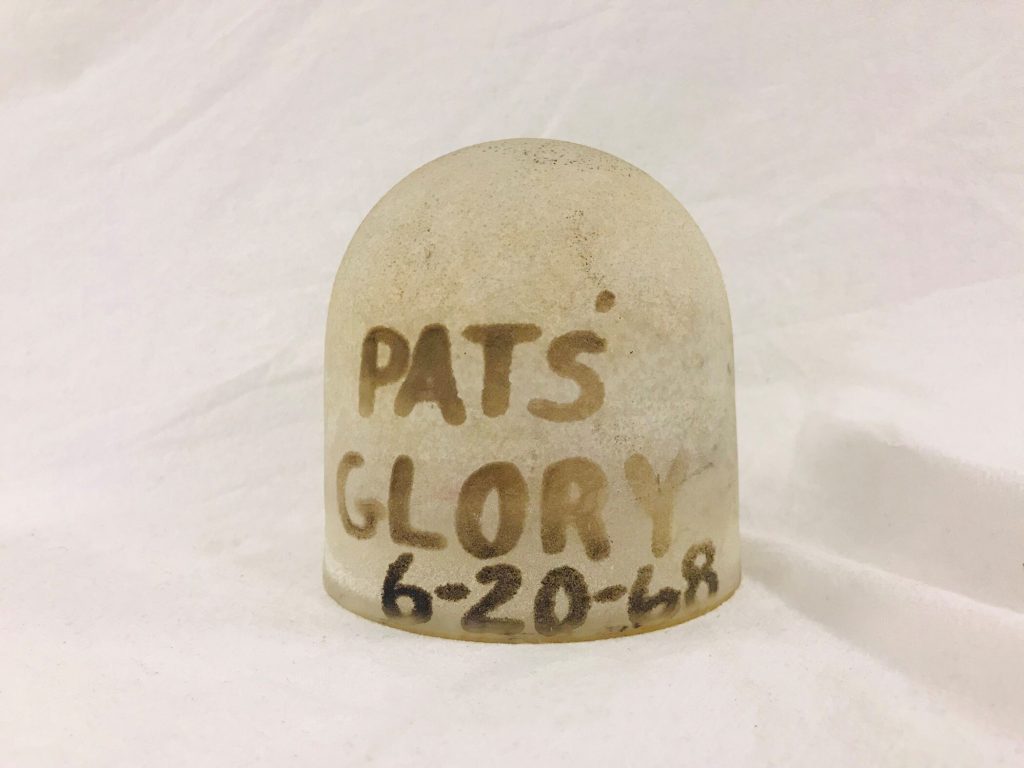
Pat’s Glory:” Patricia Anderson succeeded in the rare accomplishment of pulling a single crystal from all the molten silicon held in the crucible on June 20, 1968, just a few months after starting work at Elmat/Semimetals. Collection of CHM, 102806910
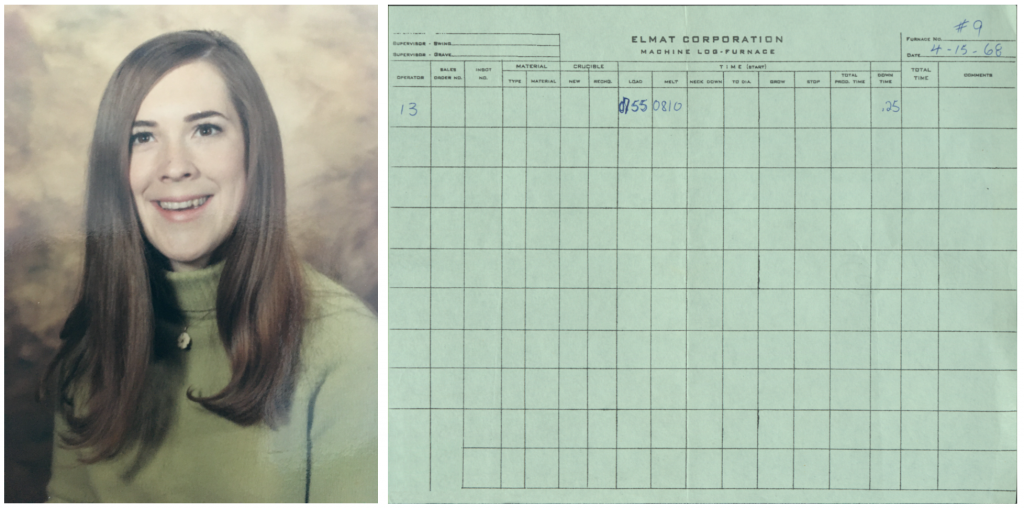
Left: Patricia Anderson in May 1971, during her second period working as a “crystal puller” for Elmat/Semimetals. Credit: Collection of CHM, 102792161; Right: Crystal growing operators were required to keep logs of their work on each of the various growing machines and their different results. This one dates from Patricia Anderson’s beginning work at Elmat/Semimetals. Credit: Collection of CHM, 102793123
Anderson was such a good crystal grower that she was poached. Hewlett Packard hired her away to grow crystals for them: “Hewlett Packard was the place to work . . . you got flexible hours or as long as we worked eight hours, we could take two-hour lunches and go bike-riding, which I did every Friday . . . They had the ranch up in the Santa Cruz Mountains where they had the big picnics every summer, and whatever. I mean, it was the perfect place to work.”
Nonetheless, the general air pollution in Silicon Valley, and chemical exposures at work put production employees like Anderson at risk: “[W]e were etching the wafers under hoods with aqua regia, you know, hydrochloric acid and sulfuric acid mixed together. And that was when the smog was hanging all over the Bay Area, and there were no scrubbers on the top of the building, so everybody’s cars out in the parking lot were getting pitted from the release of all these toxic things . . . that was the smog land . . . it was horrible to look around and see all the air the way it was. And it was one of the reasons I left . . . since moving back to Alaska, I’ve had breast cancer three times.”

Crystal growing was a delicate process, highly sensitive to chemical, temperature, and mechanical effects. When a crystal went awry, many exotic shapes could result. Patricia Anderson kept a sampling of such reject crystals. Credit: Collection of CHM, 102806916 and 102806912
A Crystal Puller Goes Home
Anderson left Silicon Valley for good in 1974: “The winter of ’74, I came up to visit my oldest brother, who was a wireman . . . The IBEW [International Brotherhood of Electrical Workers union] Local 1547 covers the whole state of Alaska. I came up, and I went to a [IBEW] Christmas party with him . . . The head of the apprenticeship school was at the Christmas party and started talking to me and said, ‘You know, we’re going to need a lot of people for building the pipeline from Prudhoe Bay to Valdez, and you should consider getting into the apprenticeship program’ . . . I gave two weeks’ notice at Hewlett Packard, packed up and jumped in my Toyota Corona and drove it to Seattle and put it on an boat, and I came up.”
Anderson’s brother eventually served as the president of IBEW Local 1547, and she became a union member herself: “I as on line crews and climbing poles and whatever. I really went into installing telephone business systems, like the multiline business PBXs. That’s actually what I ended up doing.” Anderson continues to live in Anchorage today.
I hope I may be forgiven by ending on a personal note and a request. It has been a true pleasure working with Patricia Anderson to preserve her collection and her story at CHM. The history of Silicon Valley is built from the stories of many thousands of people like her who worked in production and manufacturing roles in the electronics, semiconductor, and computing industries in the important decades of the 1950s, 1960s, and 1970s. I was incredibly lucky that Patricia Anderson found the Museum, and that I could undertake this work with her. Making these kinds of connections is essential for this kind of historical work. If a friend or relative of yours had such a role in those decades, please get in touch with me at dbrock@computerhistory.org. As I said at the beginning of this piece, curation is largely a story of dependence. We’re depending on you for these connections, dear reader.
from Hacker News https://ift.tt/3woOFxb
No comments:
Post a Comment
Note: Only a member of this blog may post a comment.